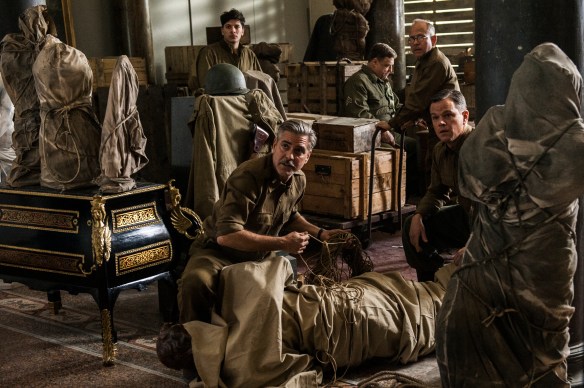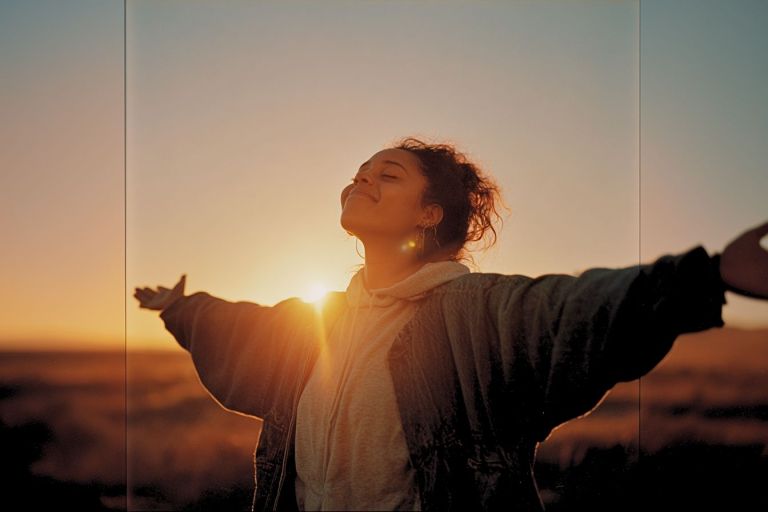
What The Things You Save Say About You
If we choose to see it, our own lives are surrounded by these kinds of choices. If we're lucky, we have grandparents, who are taking with them important bits and pieces of history as they go.

In 1943, when World War II was at its peak and much of Europe was being destroyed or stolen in the crossfire, a relatively small group of servicemen was established to protect and retrieve the cultural properties of the countries caught in the battle. The Monuments, Fine Arts, and Archives program, or MFAA, ventured into some of the most dangerous areas of active fire to protect the great works of art that may otherwise have been lost. And despite their enormous cultural importance, most people — myself included — had never heard about them. In a thousand documentaries about Hitler watched late at night on the History Channel, I had somehow never caught on to the people who saved so much of what is important to us. As the battle over lost art continues to rage on, it’s hard not to think about what the MFAA’s work really means.
I have heard it argued many times that art, on a grander scale, is not that important. You look at it in the face of lives lost in war, and it seems superfluous. We look at the creative degrees that droves of students pursue and find it almost tedious when there is such important work to be done in the fields of technology, medicine, or engineering. We tend to think of art and culture, whether or not we openly admit it, as the whipped cream of life. If there is time for it, it’s a pleasant endeavor, but few people would argue that the men who saved Picassos are as important as the men who stormed the beaches of Normandy. And many of us are dissuaded from pursuing work in an artistic field because, aside from its financial uncertainty, our parents feel that there is so much more useful work that we could be doing.
And yet, the most important leaders of the American military presence in Europe at that time decided that saving these works — regardless of risk — was an enormously important endeavor. Logically, they were just brushstrokes on a canvas, and you could argue that the men going to retrieve them could have been fighting directly to save a human life. But when FDR himself established the commission, even as so many of his people were fighting and dying to protect a much bigger human ideology, he knew that there was something intangible about art that was worth dedicating precious human resources to.
If we choose to see it, our own lives are surrounded by these kinds of choices. If we’re lucky, we have grandparents, who are taking with them important bits and pieces of history as they go. If we chose to do so, we could talk to them daily. We could watch the movies that shaped their view of the world, we could look through their black and white photos, we could read the letters they wrote to one another, we could flip through their sketchbooks. And even personally, we could take the time to preserve our creative pursuits, from the drawings we did in the back of our school books to the first attempt at a novel we made in the summer between high school and college. We could look at the art around us — even if it doesn’t have as immediate a purpose as, say, our grades or our salaries — and decide that it is worth giving special attention.
It’s hard to put a quantitative value on what the MFAA saved for us in World War II. There are art buyers who could appraise the works individually and come up with a ballpark number, and it would probably be incredibly high. But perhaps what was most important about their work was the hope they gave that, in all of the sacrifice and even in the return to the tedium of daily life, there was something greater and more nourishing that they could preserve. They could hold on to the reminders that these cultures, and by extension, these people, are more than just the sounds of their weapons or their political disputes. We tend to calculate our own lives in very tangible ways, and forget the creative life we live that imbues it all with a sense of purpose. But maybe, if we learn anything from what these men did, it is that what we decide to save — and what we make sure will be there for our children to learn from — says more about us than how many people remember our name. ![]()
This post brought to you by Sony Pictures’ The Monuments Men – directed by and starring George Clooney. Based on a true story, it features a WWII platoon tasked with saving art masterpieces from Nazi thieves and returning them to their rightful owners. See it in theaters on February 7th.
[youtube=http://www.youtube.com/watch?v=oBfMOmR4S9M&w=584&h=390]











